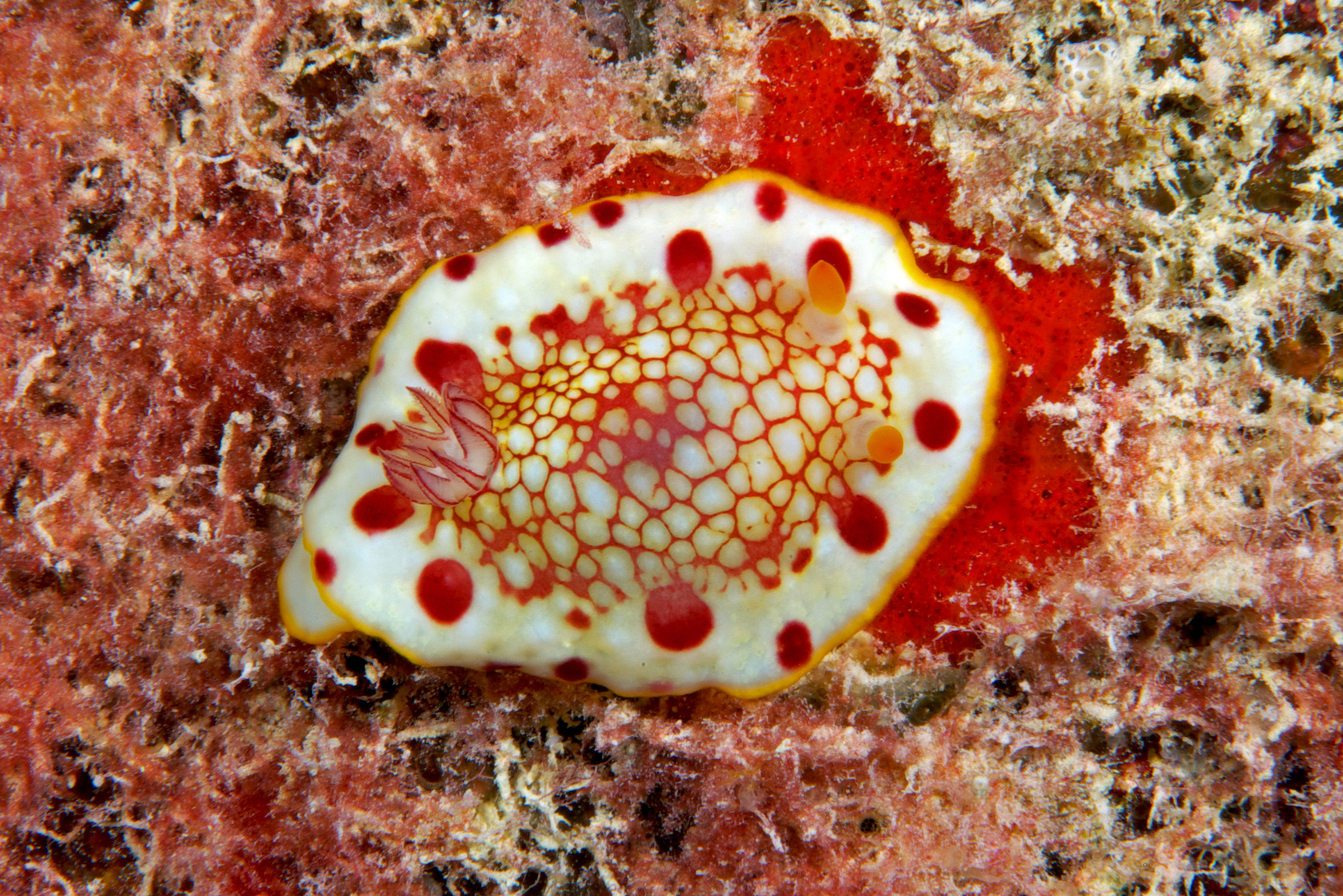
In collaboration with the Papahānaumokuākea Marine National Monument (PMNM) Cultural Working Group’s (CWG) Nomenclature Subcommittee (Nomenclature Hui) and the National Oceanic and Atmospheric Administration (NOAA) and the Waimānalo Limu Hui, we offer the following Hawaiian name for the Midway nudibranch (Goniobranchus) species.
The proposed name follows the Nomenclature Hui’s naming guidelines that are informed by traditional Hawaiian naming strategies for flora and fauna (see Pihana & Lorenzo-Elarco, 2022). Most specifically, the names presented here are aligned with the ways other nudibranchs and similar species are named.
The only recorded name for any nudibranch in the Hawaiian Dictionary is the Lepelepe o Hina, or the Spanish Dancer. Both Hawaiian and English names allude to this nudibranch's ability to dance through the water by undulating its mantle edges (lepelepe). Because the midway nudibranch does not have this ability, a name similar to lepelepe o Hina might not be appropriate. One Cultural Working Group member recalls Uncle Les Kuloloio from Maui, who applies the term “Naka” to all nudibranch species. Naka appears in the Hawaiian Dictionary as a sea creature and also a land shell (Thaumatodon nesophila). Modifiers are added such as the Naka Kua Poʻi for the false ʻopihi (Siphoneria) and Naka ʻŌniʻoniʻo (Pleurobranchus). Naka Kāniʻo and Naka Kua Mauna are other names for terrestrial snail species (Nesopupa thaanumi, N. oahuensis). Titcomb records from her informants that Naka are the chitons (Ischnochiton petaloides), a kind of hard-shell marine mollusk. With its flat bodies that hug the rocks, it is strikingly visually similar to some species of nudibranch. Further, Titcomb records Naka Huluhulu as the Onchidium sp. and the Umbraculum sinicum, which is a kind of marine slub that also holds visual similarities to both the chitons and nudibranchs. Though not exclusively a nudibranch, the term naka describes slug-like, slow-moving creatures with flattish bodies. Modifiers are added after naka to describe physical features and characteristics.
Naka kuāʻula is a contraction of the terms naka and nukuāʻula. A nukuāʻula, or nukunukuāʻula is described as a type of fishing net. This kind of net was made with maka (mesh) so fine that only the nuku (very tip) of the finger could be inserted—about 0.5 inches wide. This net is clearly seen in the pattern on the back of this nudibranch, a physical characteristic that is unique to the Midway nudibranch.